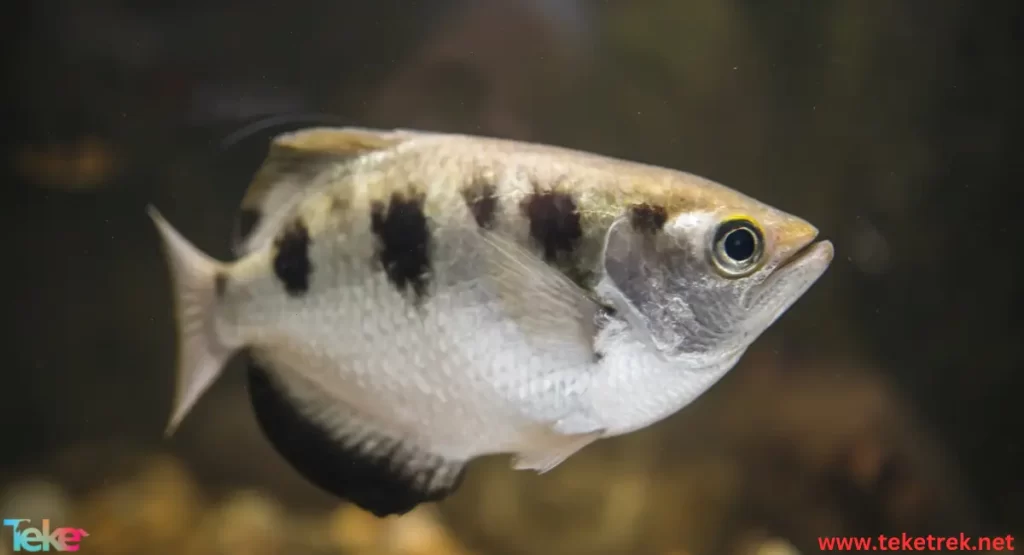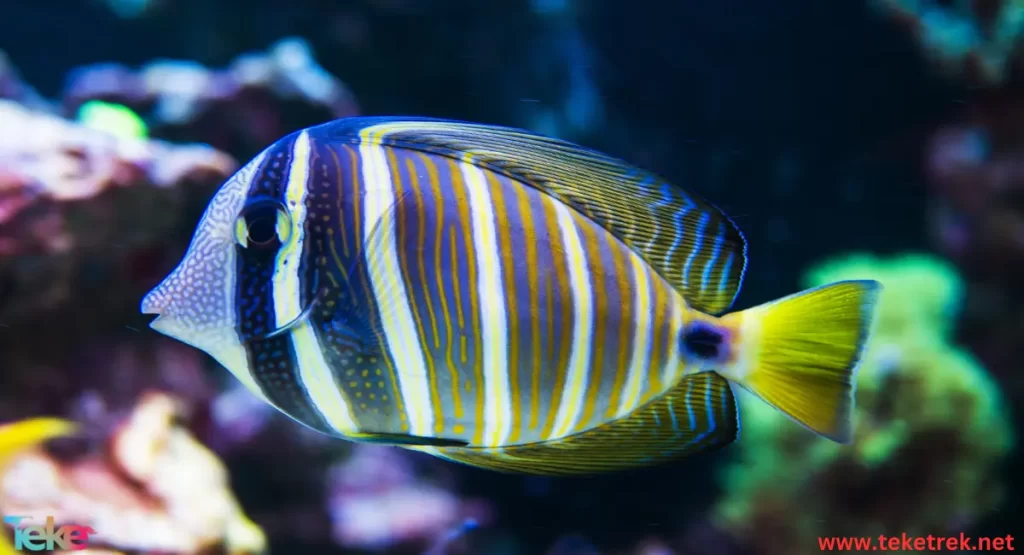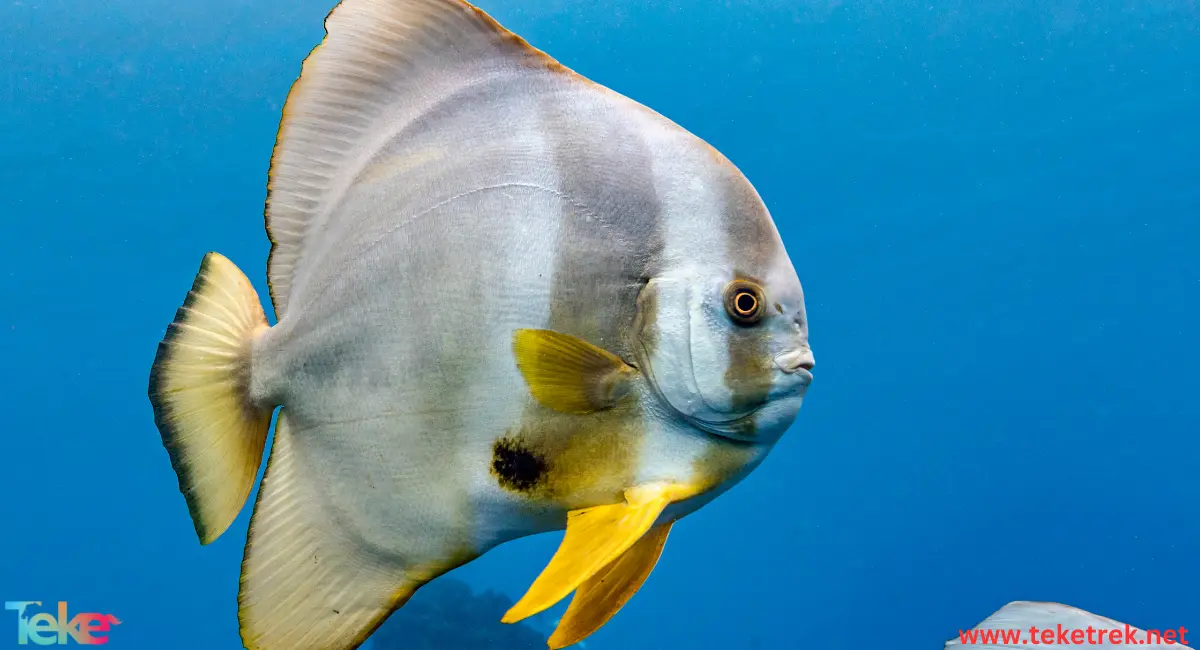The nagel fish is one of the strange and interesting marine creatures that live in the deep oceans around the world.
The nagel fish is characterized by its strange and mysterious shape that arouses the curiosity of researchers and scientists alike.
Despite the beauty and strangeness of the nagel fish, the nagel fish is considered a strong and effective marine creature in its environment.
The nagel fish plays an important role in the balance of the marine ecosystem, and is an integral part of the biodiversity in the oceans.
The discovery of this mysterious marine creature is one of the most prominent marine discoveries that arouses the interest of the entire world. Let’s get to know it in today’s article from Teke Trek.

An introduction to the nagel fish
The coral trout is called the coral trout, the coral trout, or the coral leopard grouper. The coral trout belongs to the family of fish known as groupers, and it also belongs to the phylum Chordata, the class of actinomycetes.
The main types of nagel fish
Najal
The cruiser
Sharifi Sharifi
Abu Adas or Abu Huwaili Abu Adas
Locations of the nagel fish
The nagfish is found in the surrounding waters of Australia, American Samoa, Brunei, Fiji, the Cocos Islands, Hong Kong, Japan, Indonesia, Malaysia, as well as New Caledona, Micronesia, the Northern Mariana Islands, Valencia, Papua New Guinea, Samoa, as well as Singapore, Solomon Islands, Thailand, Taiwan, Vietnam, Saudi Arabia, in addition to Egypt.
What are the characteristics of the nagel fish?
The length of the nagel fish is approximately 40 cm, and it can reach up to a meter or a meter and a half.
The nagfish has a stocky body, pronounced fangs, a cropped tail, and a plump belly.
The nagel fish has a blue color when it is alive and becomes black or dark after death. The background color of the nagel fish is bright red, crimson, and the color varies according to the time, place of fishing, and living conditions.
What is the food of the nagel fish?
The nagel fish feeds on small fish and invertebrates such as molluscs, crustaceans, and worms, and it also feeds on algae and seaweed.
Stages of reproduction in nagfish
Grouper fish reproduce between the months of March and August, laying eggs that float on the surface of the water until they hatch.
What are the threats to the nagel fish
The nagfish faces many threats that affect its survival and genetic diversity. Among the most important sources of threat to the nagel fish, we can mention:
1. Loss of natural habitats: The deterioration of the natural habitats of the nagel fish is considered one of the most important threats it faces, whether due to water pollution, climate change, or increased human activity in the region.
2. Increased water temperature: Increased water temperature may lead to a change in the environment of the nagel fish and a negative impact on the growth and reproduction of these fish.
3. Overfishing: Excessive fishing of the nagel fish by small fishermen leads to a significant decrease in its number.
4. Changes in the feeding system: Disturbance in the diet of the nagel fish may lead to a shortage of food sources important for the survival of these fish.
the benefit of nagfish for the environment
Najal fish has many benefits for the environment and ecosystem, including:
The nagfish is an important part of the ocean food chain, as it serves as food for other fish, mammals and birds.
It contributes to regulating the numbers of other types of fish and marine organisms, which maintains the balance of the environment.
Nagle fish clean the oceans of waste and sediments, which contributes to improving water quality.
Najal fish is an important source of protein and healthy fats that other marine organisms benefit from.
Some species of nagfish may remove harmful algae from the oceans, reducing the balance in the ecosystem.
The existence of the nagel fish is a source of excitement and wonder for scientists and researchers, as its studies can be used to understand more about the deep-sea environment and the conditions in which it lives, which contributes to the development of knowledge and scientific research.
In general, the presence of nagfish in the oceans is considered necessary and brings benefits to the environment and humans.
the advantages of najal fish meat
Najal fish meat has several characteristics that make it popular with many people. Here are some of its main features:
1. Delicious taste: Nagle fish meat has a delicious and rich taste, making it a delicious choice for seafood meals.
2. Rich in protein: Najal fish meat contains a large amount of proteins, which are essential for building muscles and tissues in the body.
3. Rich in omega-3 fatty acids: Najal fish is a good source of omega-3 fatty acids, which are beneficial for cardiovascular health.
4. Low in calories: Najal fish meat is considered low in calories compared to some other types of meat, which makes it a healthy choice.
5. Easy to digest: Najal fish meat is considered easy to digest, which makes it suitable for people who suffer from digestive problems.
In addition, nagel fish meat is a good source of vitamins and minerals such as vitamin D, zinc and selenium.
Eating najal fish regularly can be beneficial for your health and contribute to improving overall healthy nutrition.

FAQs about nagel fish
Here are the most frequently asked questions that people are interested in about Nagel fish, along with their answers.
Is nagfish a grouper?
Yes, it is known in the Gulf countries as the coral grouper.
How much does a kilogram of najal fish cost?
Its price is about 5,000 pounds.
What does the nagel feed on?
Nagle fish feed on crustaceans, especially shrimp, in addition to coral reef fish.
In short, it can be said that the nagel fish has delicious meat, rich in protein and omega-3 fatty acids, and is also low in calories and easy to digest.
Eating najal fish regularly is a healthy option that contributes to improving healthy nutrition and maintaining the health of the heart and body in general. Keep eating this type of fish as part of your diet to enjoy its health and delicious benefits.





